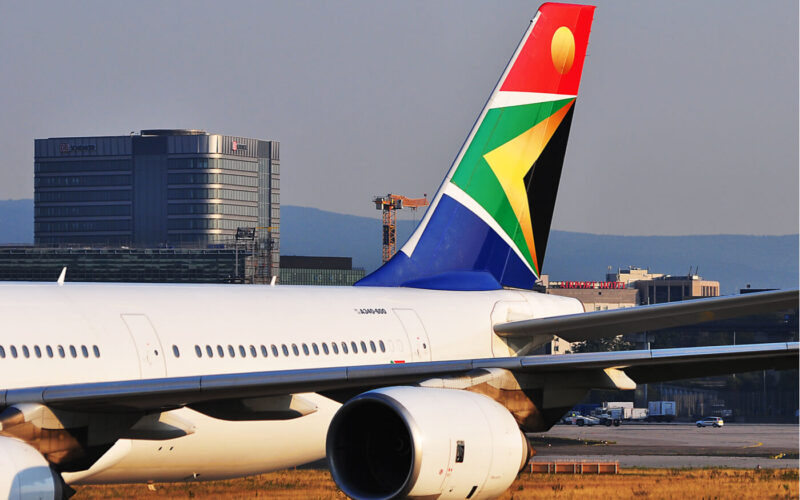Earlier in November, South African Airways (SAA) announced a new restructuring plan in hopes to break years-long string on losses and accelerate a turnaround process. But now it is facing a two days strike, threatening the very survival of South Africa’s national carrier.
The South African Airways Cabin Crew Association (SACAA) and the National Union of Metalworkers of South Africa (NUMSA) embark on a strike on November 15, 2019. The airline has already cancelled all flights for two days, counting costs at $3.36 million (50 million rand) per day and calling it threat for survival.
The unions are protesting SAA’s plans to fire over 900 employees, as well as failure to meet 8% salary increase demand. Their other demands reportedly include a guarantee for job security for no less than three years and are advocating against the airline’s practice of hiring contractors for certain works, such as cleaning.
Stating previously that it expected the strike to cause “minimum disruption” to its operations, ahead of the industrial action SAA canceled all domestic, regional, and international flights on November 15-16, 2019, making an exception to just “a few” international flights, according to travel advisory issued on November 13, 2019. Cancellations do not affect Mango, SA Express, Airlink or SAA’s codeshare partners.
In a separate statement, SAA stated that a prospect of a strike “endangers” the airline’s future and poses a threat to jobs. “The strike is going to exacerbate rather than ameliorate our problem, and will result in a set of circumstances from which there may well be no recovery,” SAA acting CEO Zuks Ramasia is cited in the statement as saying.
SAA’s turnaround plan turns against it
On November 11, 2019, SAA announced the beginning of a restructuring process, revealing that it might lead to job losses for over 900 employees from its more than 5000-strong workforce.
Describing its current situation as “grave”, the airline has outlined such problems as years of difficulties to find funding, accumulation of debts with high interest, fluctuating fuel prices and a low operating income. These challenges hindered SAA’s competitiveness in the international and regional markets.
“In addition, SAA’s balance sheet has historically been weak and remains so despite recent substantial capital injections from the government,” acting Chief Executive Officer Zuks Ramasia was cited explaining in the announcement. “Our continued losses and reliance on government guarantees to borrow money from lenders, have increased the interest costs which impacts the operating cost of the business.” According to Ramasia, the need to address the loss making position was urgent.
The last time the airline made a profit was back in 2011. Since then, the airline has been relying on loans and government support. However, the argument, particularly the part of job cuts, appear to have not convinced its workers, as reportedly 3000 of the 5000 staff are participating in the industrial action on November 15, 2019.

